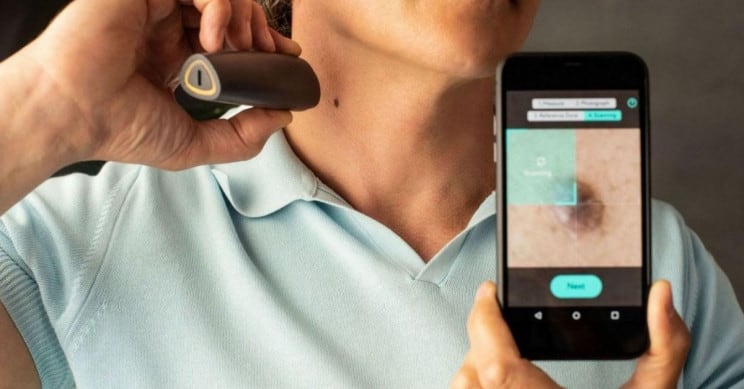Introducing NOTA: A Revolutionary Skin Mole Monitoring Device
A new device called NOTA could be the key to catching skin cancers like melanoma early.
Skin moles are usually harmless, but they can turn cancerous over time. Medical professionals advise that you self-check your moles regularly, but unless you are medically trained, you may miss some important signs of melanoma.
This is where devices like NOTA could prove to be revolutionary in the early diagnosis of problematic moles. Read on to find out more about this amazing piece of skincare tech.
But, like anything health-related, always consult your physician before performing any kind of medical self-examination.
Skin moles (called Nevi in the medical world), are pigmented skin formations that can vary in color. They can appear brown, black, red, or even purple, but are rarely multi-colored.
They can be flat or raised, and may well feel smooth or rough to the touch. You may even have moles with hair growing out of them. They are caused by clusters of pigmented cells (Melanocytes) and generally appear during childhood and adolescence. These cells normally are evenly scattered throughout your skin and produce melanin — the natural pigment that gives your skin its color.
Most people have at least one of them, and they are usually nothing to worry about unless you notice a change in size, shape, or color. Most people have between 10 to 40 of them, some of which are likely to change in appearance or fade away over time.
Moles are usually harmless but can, on rare occasions, become cancerous. That is why you should monitor their appearance over time.
Moles are typically oval or round in form and tend to be smaller than 1/4 inch (6 mm) in diameter. They can develop anywhere on your body, including your scalp, armpits, under your nails, and between fingers and toes.
Most moles will have developed on your body by the time you reach the age of 50 years.
According to the National Health Service in the United Kingdom, it is quite normal for:
- babies to be born with moles.
- new moles to appear – especially in children and teenagers.
- moles to fade or disappear as you get older.
- moles to get slightly darker during pregnancy.
Melanomas are the main complication associated with moles, and some people have a high risk of their moles becoming cancerous over time. Factors that increase your risk of developing melanoma include, but are not limited to:
- Being born with large moles. These types of moles are called congenital nevi. On an infant, such moles are classified as large if they’re more than 2 inches (5 centimeters) in diameter. Even a large mole seldom becomes cancerous and almost never before the child reaches puberty.
- Having unusual moles. Moles that are bigger than a common mole and irregular in shape are known as atypical (dysplastic) nevi. They tend to be hereditary. And they often have dark brown centers and lighter, uneven borders.
It is advised that you become familiar with the location and pattern of moles on your body and regularly monitor them for any changes. You should perform self-examinations at least once a month, especially if you have a family history of melanoma.
You will likely need to use mirrors to perform a head-to-toe check (including scalp, palms, fingernails, armpits, chest, legs, and feet including your soles and spaces between your toes). It is also advisable to check your genital area and buttocks too.




